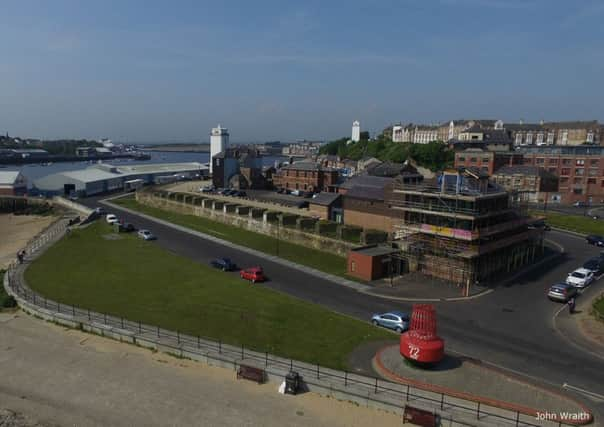Memorial to brave fishermen becomes closer to reality


First off is a catch-up relating to a story the Gazette did concerning a fundraising project aimed at creating a memorial for the many North Shields fishermen who have lost their lives over the years.
Alison Spedding, of the Heritage Project, wrote to say: “Time has ‘marched on’ somewhat since I last contacted you, and we now have over £15,000 raised for the memorial.
Advertisement
Hide AdAdvertisement
Hide Ad“We are now trying to attract donations from local businesses, for as well as this being a fitting memorial to the many men lost at sea, it will also be a piece of ‘destination art’, helping to regenerate the North Shields Fish Quay.
“The memorial will happen and, many of the fishermen sailing out of North Shields will have come from south of the river – our own vice chairman Henry Howard is in fact from Jarrow so we would love to keep you in the loop with our progress.”
After a public vote, The North Shields Fishermen’s Heritage Project (NSFHP) chose the design Fiddlers Green, by local sculptor Ray Lonsdale for the proposed memorial sculpture.
According to the song of the same name, Fiddlers Green is the mythical place fishermen go to when they die, and the twice life-size sculpture, costing £72,000, will be sited on the foreshore at Clifford’s Fort, North Shields, on a green space that looks out beyond the North and South Piers – a site which is currently owned by North Tyneside Council.
Advertisement
Hide AdAdvertisement
Hide AdNSFHP spokesman Keith Spedding said “We often refer to the memorial as a piece of ‘destination art’ and our belief is that once it’s in place people from outside the area will travel to see it, just as they do with similar designs such as Seaham Tommy or the Angel of the North.
“We are confident that such a landmark piece of public art will provide a significant contribution to the regeneration of the fish quay area as well as being a fitting tribute to the many men who lost their lives at sea”.
Meanwhile, Dr Rob Robinson got in touch to say: “Back in 2008 you ran a story about a Great War armed trawler, the Viola, which had been requisitioned by the Admiralty and spent two years patrolling from North Shields during the Great War.
“The vessel was involved in combating the menace from mines and U-boats.
Advertisement
Hide AdAdvertisement
Hide Ad“The trawler is still around, virtually the only survivor of its kind and an icon of the North East’s Great War story. It lies at the old whaling station of Grytviken on the island of South Georgia.
“The story you ran related to the reuniting of the trawler with its bell after about 80 years.
“There has since been a development, namely, I have written a book about the trawler (http://www.lodestarbooks.com/?wpsc-product=viola).
“The North East dimension of the vessel’s story is well covered in the book.
Advertisement
Hide AdAdvertisement
Hide Ad“For example, while patrolling out of the Tyne, the vessel was involved in sinking two U-boats and was involved in many actions from the Farnes down to below Whitby.
“The crucial role that fishermen from the North East, and indeed all parts of the coast of the British Isles, played a crucial role in the grim fight against mines and U-boats to keep the sea lanes open, and it is a role that has been largely neglected.
“There are also moves afoot to assess the vessel’s current condition and work out options for its long-term preservation, including the possibility of returning the vessel to the UK.”
From a trawler to a brig, and an email written by Cliff Thornton, of Essex, and sent on to me by Adam Bell, Assistant Keeper, Social History, at Tyne & Wear Archives & Museums, South Shields Museum & Art Gallery.
Advertisement
Hide AdAdvertisement
Hide AdThe email states: “In early November, 1852, strong gales from the South East resulted in many ships being blown ashore along the east coast.
“One of these ships was the brig John, of South Shields.
“She came ashore north of Bridlington, in the bay which has Flamborough Head at its northern end.
“The scene was captured by a local artist, William Fallowes, who paid two visits to record the ship.
“I thought that the attached scan of his two sketches may be of interest to your maritime records.
Advertisement
Hide AdAdvertisement
Hide Ad“The vessel appears to have suffered minor damage to her hull, so I suspect that she was re-floated and returned to service.
“Fallowes sketched the scene in pencil on scraperboard, using the medium to give highlights to the scene. Each sheet of scraperboard is 180mm x 135mm.”